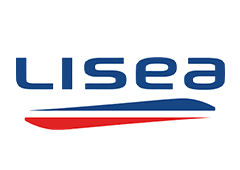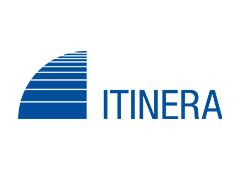Why Health and Safety is a question of culture
Responsible finance
Why Health and Safety is a question of culture
-
28 July 2022
-
Real Assets
-
Infrastructure, Sustainability
Reading time: 9 minutes
Everyone working on site in the infrastructure sector puts themselves at risk – working close to fast-moving traffic, near high-voltage power cables or on large, complex construction sites. Incidents and near-misses are a persistent problem, especially among workforces with high rates of staff turnover that can result in poor awareness of Health and Safety (H&S) procedures.
Problems with H&S performance are therefore a critical concern for infrastructure companies, says Candice Brenet, Managing Director & Head of Sustainability. “Poor practices and misunderstanding of H&S issues can threaten the welfare of both workers and infrastructure users, as well as causing significant reputational damage and mitigation costs for infrastructure companies."
A positive H&S culture is essential for every organization. At Ardian, we consider H&S as a value and absolute commitment that is fully integrated within our Sustainability Engagement Program. We fully support our portfolio companies to constantly improve the H&S performance at employee, subcontractor and end user levels.
Raphaëlle Muhlmann-Eytan, Director of Asset Management for Ardian Infrastructure, says: “We consider H&S an absolute priority. We engage continuously with all portfolio companies to improve their H&S management systems and agree annual plans to enhance H&S culture and performance.” As part of this engagement, Ardian’s Transport Working Group (TWG) used its last meeting to focus on the challenges of embedding H&S awareness in their organizations, including suppliers and sub-contractors. This workshop was set up by the Infrastructure and Sustainability teams to help portfolio companies share knowledge and best practices on H&S.
Culture driven from the top
Monitoring workplace incidents and injuries through annual H&S audits is essential, says Ardian operating partner Graham Akrill, but this is not sufficient on its own. The key, he argues, is to create a strong and consistent safety culture within the organization and its contractors and suppliers, which needs to be driven from the top down.
Validation of the company’s occupational H&S management system through certifications such as ISO 45001 is an important part of this effort. In addition, infrastructure companies should encourage performance improvements with incentive and remuneration schemes that reward people for adopting the safest practices. They should assess contractors’ H&S performance as part of the selection process and provide regular training programs and H&S communications for staff and contractors alike.
At Ardian Infrastructure, health and safety performance and culture are key factors when considering new investments. In the past, we have turned down investment opportunities due to inappropriate behavior at industrial sites. Across our portfolio, our teams' efforts to promote these issues have resulted with the non-fatal accidents rate per 100,000 employees decreased by 36% at portfolio level.
-
36%
decrease at portfolio level of the non-fatal accidents rate per 100,000 employees
Rewarding good practices
Ascendi, the Portuguese toll road company that Ardian acquired in 2017, has spent the past six years revamping its H&S systems, says Miguel Martin, Chief Business Development Officer at Ascendi. Ascendi employees and contractors frequently work in high-risk environments – carrying out road patrols, highway maintenance and roadside vegetation management – all in close proximity to moving traffic.
“Six years ago, we had many challenges,” he says. “We needed better communications with employees and contractors, we needed to improve our risk assessments and standardize our H&S procedures. And we needed to create a culture that valued safety at work.”
H&S is effective when it becomes part of our culture and is no longer regarded as a policy. At Ascendi we act upon the H&S culture of our workers and contractors and also of our motorway drivers. We actively invest in young children safety culture as educators to their parents’ driving and as our future drivers.
Over the past few years, Ascendi has strengthened its in-house H&S team, expanding from two people to seven, one for each of its road concessions and has certified its H&S management systems to ISO 45001. It has also made big changes in the way it incentivizes H&S improvements by its contractors through a safety campaign it began in June 2019.
“Before, we used contracts to penalize contractors for H&S breaches, but we have moved to an approach based on rewarding successful outcomes,” he says. The three-year campaign rewards contractors that go beyond legal requirements to ensure that construction teams operate safely and applies discounts for negative results in areas such as the quality and effectiveness of signage and protective equipment.
Ascendi’s scheme creates a league table of its top-performing contractors to encourage improvements, with the top five each year eligible for excellence awards worth €2,500 each to be spent on safety training or equipment.
In the first year of the scheme, 64 projects were evaluated and €40,000 were granted in H&S incentives to 31 contractors. The following year, 98 projects were evaluated and €60,000 of incentives were distributed to 31 contractors.
LISEA and the maintainer MESEA have signed a common health and safety policy which implies all the subcontractors. It is essential to make H&S the first priority and to ensure that it will always be so, taking into account the evolutions of our activities in the future.
Violence against employees
Raphaël Senicourt, Corporate Social Responsibility Manager at Indigo, the French car park operator that was formerly part of Ardian Infrastructure’s portfolio, says that one of its main causes of injuries is physical aggression against employees carrying out on-street parking control. There is also a strong link between higher staff turnover and rates of accident and injury, he says, partly because new employees have to get to know their working environment and the risks to their safety, especially in car parks and while carrying out on-street parking control.
The Indigo Group's management has for many years instilled a strong and consistent H&S culture, both for its employees and for the users of its car parks. This is based on preventive actions and training tailored to each business line, the involvement of numerous internal and external stakeholders and is linked to remuneration at all levels of the company.
In its French parking division, Indigo spends 56% of its training budget on H&S and holds in-person meetings every month on each site to focus on the commonest safety risks. Staff who suffer physical aggression are offered psychological support to help them return to work.
Reporting systems for H&S KPIs are a vital element of every company’s safety framework. Itinera, the construction arm of ASTM, the international toll road operator, has overhauled its reporting systems since joining the Ardian Infrastructure portfolio in 2018. It drew up a new framework for its H&S KPIs in 2020 that sets out how data is to be collected, reported and analysed, establishes new H&S training methods and specifies how H&S integrates with Itinera’s sustainability reporting.
Workers’ health, safety and well-being are extremely important to ASTM. The Group promotes the spread of a safety culture in the workplace, encouraging responsible behaviours from its employees, collaborators and subcontractors, also by providing training to safeguard health and safety, minimising the risk of accidents.
Stronger reporting systems
Stefano Pesce, Director of Integrated Management Systems for Quality, Environment and Safety, says that moving from a data collection system based on calls, emails and Excel to an integrated Business Planning and Consolidation platform allowed more consistent and detailed information to be gathered. This gives a much clearer picture of accident and injury rates among Itinera’s more than 8,200 employees and contractors, who operate in 13 countries.
Under the new system, Itinera has 48 data owners across the group who are responsible for collecting and submitting information, six reviewers who verify the data and five senior staff who sign the group’s annual H&S declarations. The system initially included subcontractors in Italy, Itinera’s home market, but in 2020 it was expanded to include all subcontractors around the world.
Pesce says the next steps for Itinera are to promote an effective near-miss culture to prevent future injuries, and to extend the group’s training programs across Europe during 2022.
“We have a huge commitment from our CEO, who is very interested in changing the mentality and approach,” he adds.
Understanding the benefits
This emphasis on embedding H&S awareness in the company culture is vital. Robust measurement and reporting systems are important to track performance, but experience across present and former portfolio companies shows that the key messages must come from the top and that companies achieve the most progress when employees and contractors fully understand the benefits of having a strong H&S culture.
“Clear and concise communication is important,” says Graham Akrill.
The aim is to influence people’s behavior rather than dictate to them and to demonstrate the advantages of good practice. It is all about improving the welfare of people at work – not just having good KPIs.
In the mean time, we suggest you to read or re-read our three last meetings:
The one dedicated to carbon emissions, here
ASCENDI
Ascendi, the 2nd largest Portugal motorway network, manages infrastructure assets and provides toll collection and operation & maintenance services. It owns majority interests in 6 Portuguese road concessions, covering 630km in operation.
ASTM
ASTM is one of the world’s largest operator in the management of motorway concessions with around 4,500 kilometers of network under concession in countries such as Italy, Brazil and the United Kingdom.
LISEA
The LISEA project represents one of the biggest concession contracts in Europe. LISEA was awarded the concession contract for the Tours-Bordeaux HSL (South East Atlantic (SEA) project). Under this contract established in June 2011 by SNCF Réseau, LISEA is responsible for funding, designing, building, maintaining and operating the new HSL until 2061 (for 50 years).
INDIGO
Indigo is the world leader in parking and individual mobility, operating and driving development in both on- and off-street parking across continents. The company operates in over 750 cities around the world with more than 23,000 staff across 12 countries.
ITINERA
Itinera has been active in large-scale infrastructure projects and civil construction for more than 80 years, in Italy and around the world. Established in 1938, the Company is part of ASTM Group, the second toll road operator in the world with approximately 5,600 km of roads under concession.














